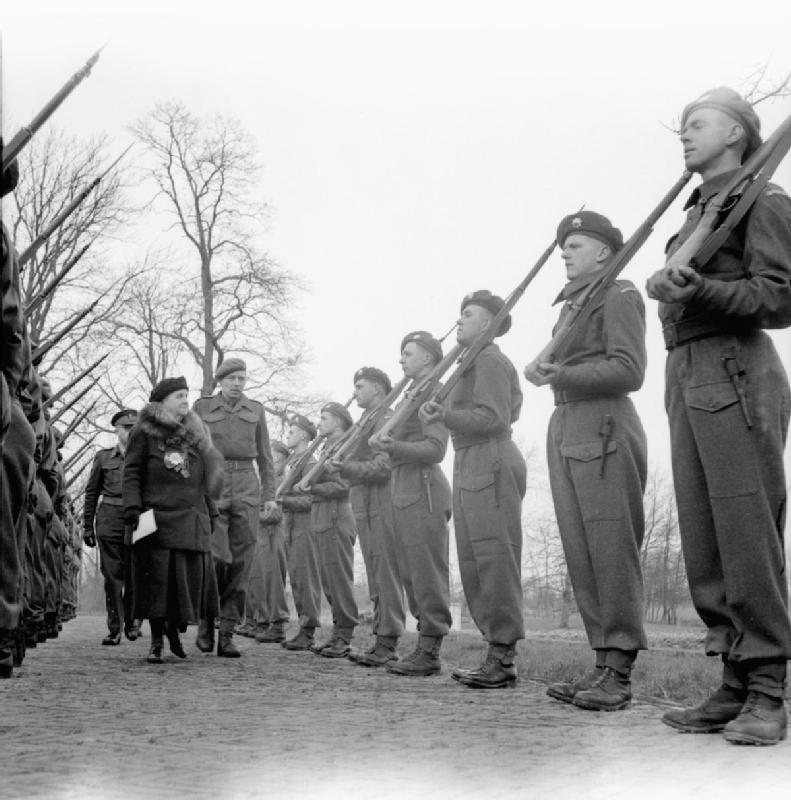It’s been more than 70 years since the end of the Netherlands’ darkest period in history. After years of German occupation during the Second World War, the Dutch had something to celebrate: liberation.

Between September 1944 and May 1945, the First Canadian Army fought by land, sea and air to push the Nazi’s out. More than 7,600 Canadian soldiers died on Dutch soil.
And as Canada hits its 150th birthday, we look back at some of the relationships the country has forged.
It was on May 5, 1945 that Canadian Lt.-Gen. Charles Foulkes met with German General Johannes Blaskowitz at the Hotel de Wereld in Wageningen, where he accepted the surrender of 117,000 German troops in the Netherlands.
After years of blood, starvation and deprivation, the Dutch were free at last, with the help of Canadian, Polish and British forces, as well as American, Belgian and Dutch soldiers at times.
Canadian soldiers faced the daunting task of an overland assault across difficult, flooded terrain against an entrenched enemy.
“As a fighter-reconnaissance pilot Veteran of the Battle for the Liberation of the Netherlands, I had first-hand exposure both to the deprivation forced upon the Dutch people by their Nazi conquerors and to the enormous casualties endured by Canadian forces in the bloody struggle to defeat the German military,” Major-General Richard Rohmer, a WWII veteran, once remarked.
The Groesbeek Canadian War Cemetery near the Dutch city of Nijmegen alone holds the graves of more than 2,300 Canadians. Every year, thousands of Dutch children tend the graves of the soldiers buried here as they do throughout the whole country.
According to Veterans Affairs Canada, the First Canadian Army also played a leading role in opening Belgium and the Netherlands’ Scheldt estuary river.
Access to this port maintained supplies to allies as they continued to push towards Germany to defeat Adolf Hitler’s forces and free Europe from Nazi occupation.
After the Battle of the Scheldt in November 1944 to open up the port of Antwerp, winter brought a period of reduced fighting. And when the new allied offensives began their fight again in 1945, the First Canadian Army helped liberate the northeastern and western Netherlands, until the Germany Army officially surrendered in May.
“Their surrender to Canadian Lieutenant-General Charles Foulkes, at Wageningen, on May 5, 1945, helped to finally end the war in Europe,” said Rohmer.
It was the end of a long and bloody war, but another chapter for Canadians and the Dutch people. Every year since the end of the Second World War, Holland sends thousands of tulips to Canada for the appreciation of service. There’s a weeklong tulip festival in Ottawa every spring.
In 1943, Princess Juliana of the royal Dutch family gave birth to her daughter Princess Margriet at the Ottawa Civic Hospital. The ward was declared a temporary international territory by the Canadian government, so that the princess would inherit her Dutch citizenship from her mother.
Juliana sent another 20,500 tulips in 1946 for display at the hospital.
To this day, the gratitude and relationship between Canada and the Netherlands continues. For Canada 150, the Dutch engineered a flower that has a blend of red and white petals representing the Canadian flag as a thank you. They will be featured at this year’s Tulip Festival in Ottawa.
“The tulip represents gratitude and the long-standing friendship between Canada and the Netherlands. Blooming in the colours of Canada’s flag, Canada 150 tulips will bring both pride and joy to gardens and communities from coast to coast to coast,” said His Excellency Cees Kole, Ambassador of the Kingdom of the Netherlands in a news release.
–With files from Elton Hobson, Global News.
In celebration of Canada’s 150th birthday, History has unveiled a slate of digital shorts, titled Thank You, Canada, reflecting our historical successes and milestones. They’ll be rolling out from now until Canada Day (July 1).
History and Global News are Corus Entertainment properties.
- ‘Shock and disbelief’ after Manitoba school trustee’s Indigenous comments
- Canadian man dies during Texas Ironman event. His widow wants answers as to why
- Several baby products have been recalled by Health Canada. Here’s the list
- ‘Sciatica was gone’: hospital performs robot-assisted spinal surgery in Canadian first






Comments